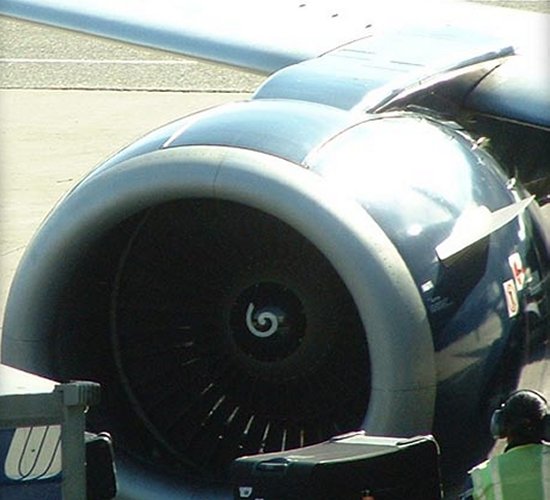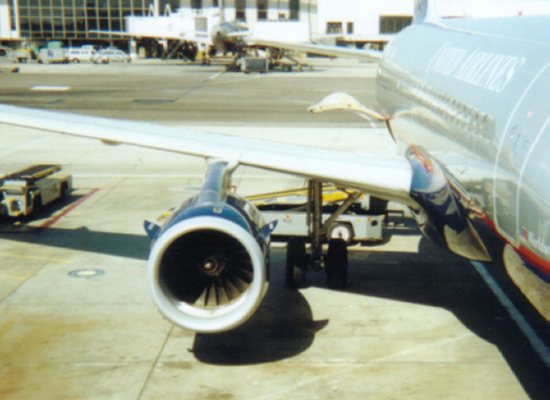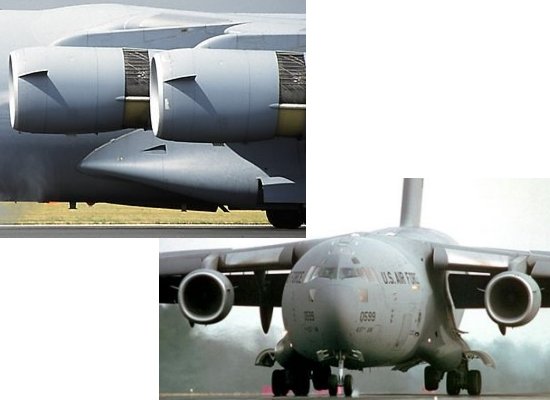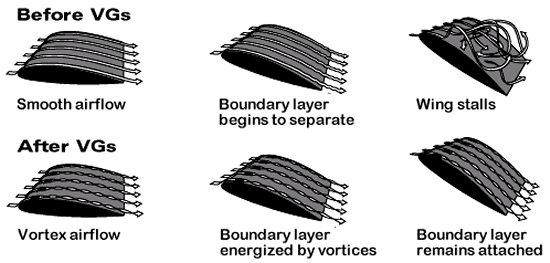|
||||||||||
|
|
||||||||||
|
||||||||||
|
|
||||||||||
The type of vortex generator used on an engine nacelle is generally much larger than those placed on a wing or tail surfaces. Looking much like a large "shark fin," this type of vortex generator is typically second in size only to a device like the leading edge root extension. An example of the vortex generator used aboard the current generation of the Boeing 737 family is pictured below. One generator is located on the inboard side of each nacelle. These devices can be seen aboard the 737-600, 737-700, and 737-900 in addition to the 737-800.

Also note that more traditional vortex generators can be seen on the upper surface of the 737 wing in the above picture. Compare the size of the large "shark fin" attached to the nacelle to the much smaller generators located just behind and outboard of the pylon attaching the nacelle to the wing.
Other airliners use even more of these nacelle vortex generator surfaces than the 737. The Airbus A320, for example, is fitted with two of these large generators on each nacelle with one located on each side. An example of this design is shown below in a photo of the related A319.

Pushing the bounds of this technology even farther is the C-17 Globemaster III military transport. This large aircraft makes use of a large vortex generator on each side of its four engine nacelles for a total of eight.

The reason these surfaces are becoming so commonplace is because they are so effective at improving aircraft performance during takeoff and landing. Planes generally operate at the highest angles of attack and relatively low speeds during these phases of flight, and surfaces like slats and flaps are commonly deployed as well. The combination of high angle of attack, low speed, and deflected slats may cause the flow of air to become erratic as it tries to move around the large nacelle, particularly in the region close to the fuselage.

The large, powerful vortices created by the vortex generators on the engine nacelles help to overcome this erratic
motion. The swirling vortices speed up the flow of air and give it greater energy to maintain its motion up and
over the surface of the wing. Instead of separating from the wing and causing a loss of lift, the energized flow
continues to follow along the surface of the slats, main wing, and flaps resulting in high lift at the low speeds
encountered at takeoff and landing. These beneficial vortices make it possible to takeoff and land at lower
speeds and in shorter distances than would be possible without them. Thanks to their effectiveness, large aircraft
can fly at slower speeds to improve passenger safely and operate from shorter runways. It is for this reason that
vortex generators are so prevalent on both commercial and military aircraft.
- answer by Jeff Scott, 18 December 2005
Read More Articles:


|
Aircraft | Design | Ask Us | Shop | Search |

|
|
| About Us | Contact Us | Copyright © 1997-2023 | |||
|
|
|||